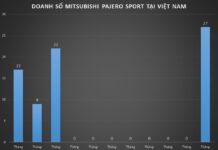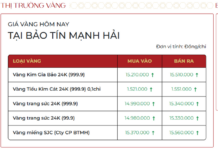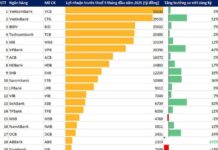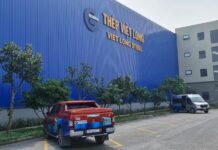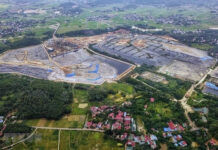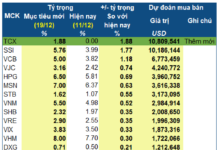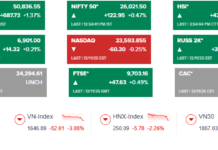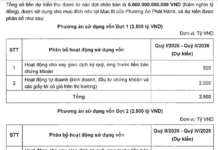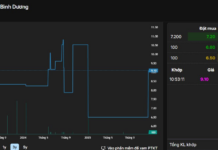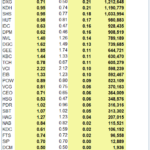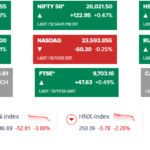On September 13, 2024, in An Khe town, Gia Lai province, the Vietnam Sugarcane Association organized a workshop on the climate adaptation strategy to enhance the competitiveness of Vietnam’s sugarcane industry. At the same time, the Vietnam Sugarcane Agro-Industry Exhibition was also inaugurated. In the afternoon of the same day, the conference on the summary of the 2023-2024 sugarcane production season was held at the same venue.
AN KHE BECOMES THE LARGEST SUGARCANE-GROWING AREA IN THE COUNTRY
In his opening remarks at the workshop, Mr. Duong Mah Tiep, Vice Chairman of the People’s Committee of Gia Lai province, said that Gia Lai is located in the Central Highlands of Vietnam, with a mild climate favorable for agriculture, accounting for 58.7% of the province’s economic structure. Gia Lai has a strength in developing long-term industrial crops such as rubber, pepper, and especially sugarcane, which plays an important role in the local crop structure.
“Gia Lai currently has over 40,000 hectares of sugarcane cultivation area, occupying a large proportion of the total sugarcane raw material area in the Central Highlands in particular and the country in general,” said Mr. Tiep. “Sugarcane not only provides a livelihood for many local farmers but also promotes the development of the processing industry, enhancing the value and sustainability of agricultural production.”

According to Mr. Tiep, there are currently two operating sugar factories in the province: Thanh Thanh Cong and An Khe. Thanh Thanh Cong factory has a capacity of 6,000 tons of sugarcane per day, with a raw material area of 1,576 hectares. An Khe factory has a capacity of 18,000 tons of sugarcane per day and a raw material area of 57,839 hectares.
In the 2023/24 crop year, the sugar production of these two factories reached 215,000 tons, accounting for 20% of the country’s total sugar production. However, Mr. Duong Mah Tiep pointed out that while Gia Lai has a large sugarcane area and output, it lacks concentration, which limits the mechanization and technology of production. For example, there are many sugarcane areas in highland regions, requiring more labor for cultivation and harvesting.
“Commercial fraud and smuggling of illegal sugar have been detected by authorities in almost all provinces and cities across the country. However, the fight against sugar smuggling remains ineffective, with many loopholes and irregularities that are being exploited by illegal businesses.”
Mr. Nguyen Van Loc, Chairman of the Vietnam Sugarcane Association.
Mr. Tiep suggested the need to develop and implement specific plans to strengthen sugarcane growing cooperatives, linking them with sugar factories for efficient operation and preventing price manipulation and contract violations in sugarcane consumption. He also proposed that functional agencies should promote the testing and selection of high-yielding, high-quality, and disease-resistant sugarcane varieties for production.
Mr. Nguyen Van Loc, Chairman of the Vietnam Sugarcane Association, shared that the country’s sugar production from sugarcane has increased for four consecutive crop years. In the 2023/24 crop year, sugar production increased by 61% compared to the 2020/21 crop year. The Central – Highlands region, with its competitive advantages in agriculture and sugarcane processing industry, witnessed a remarkable growth of 96% compared to the 2020/21 crop year. This region accounts for 62% of the country’s total sugar production and has become the largest sugarcane production center in Vietnam.
According to Mr. Loc, among the ASEAN countries, four nations are major producers of sugarcane sugar: Thailand, Vietnam, the Philippines, and Indonesia. Some other countries in the region also produce sugarcane sugar, but with lower yields and less advanced techniques, such as Laos, Cambodia, and Myanmar.
“For the first time in many years, in the 2023/24 crop year, Vietnam achieved the highest sugarcane yield in the region,” Mr. Loc shared. “The price of sugarcane has been continuously increasing in recent crop years, with a 52% increase in the 2023/24 crop year compared to 2019/20. In some areas, the price has reached 1.2-1.3 million VND per ton in the field (equivalent to 50-55 USD/ton), which is equivalent to or higher than the sugarcane prices in other countries in the region.”
However, Mr. Loc assessed that the Vietnamese sugarcane industry is being damaged by smuggled sugar. The nature of smuggled sugar is price-dumping sugar originating from Thailand, passing through Cambodia and Laos into Vietnam. This phenomenon has occurred for many years, even before the implementation of the ATIGA (ASEAN Trade in Goods Agreement), when Vietnam had 41 sugar factories. By the 2021/2022 crop year, only 25 sugar factories were operating, while 16 factories had to close down, affecting the livelihoods of more than 100,000 sugarcane farming households who were forced to switch to other crops.
“The impact of this price-dumping sugar on the sugarcane production chain in Vietnam is extremely serious,” said Mr. Loc. “Since the end of the 2023/24 crop year, Vietnamese sugar factories have struggled to sell their sugar produced from sugarcane as the market has been dominated by smuggled sugar.”
NEED TO BUILD A SUGARCANE-SUGAR VALUE CHAIN BASED ON CIRCULAR ECONOMY
At the workshop, many experts opined that in the 2024/25 crop year, climate change will have a significant impact on sugarcane production. According to the National Center for Hydro-Meteorological Forecasting, from September to October 2024 onwards, the ENSO phenomenon is likely to shift to a La Niña state with a probability of 60-70%. Therefore, it is imperative to adapt sugarcane production to climate change and reduce greenhouse gas emissions.
Dr. Raffaella Rossetto from the Sugarcane Research Center, Agronomic Institute of Campinas, Brazil, shared solutions and experiences from the Brazilian sugarcane industry. Brazil currently produces 638.4 million tons of sugarcane per year, 42.7 million tons of sugar, and 1,000 MW of bagasse electricity. With the increasing impact of climate change and water scarcity, Brazil has adopted new cultivation methods, including minimal cultivation with deep plowing and planting on raised beds using GPS techniques.
After harvesting sugarcane, Brazil returns the trash and leaves to the soil, promoting the development of sugarcane roots, soil conservation, moisture retention, and providing significant potential for soil nutrient supply. Additionally, they recycle all by-products of the sugarcane processing, including mud and ash, back to the sugarcane fields as nutrients.
Mr. Tran Quang Kien, Director of An Khe Sugar Factory, shared his experience in developing the sugarcane value chain. An Khe Sugar Factory, under the Quang Ngai Sugar Joint Stock Company, has expanded its sugarcane raw material area from an initial 3,000 hectares to 32,000 hectares today, with a target of reaching 40,000 hectares in the 2025/26 crop year. Here, a large-scale sugarcane-sugar-electricity production chain has been formed. The factory has invested in eight modern sugarcane harvesting systems and 230 tractors to support farmers in various cultivation processes, meeting the needs of the expanding An Khe sugarcane raw material area.
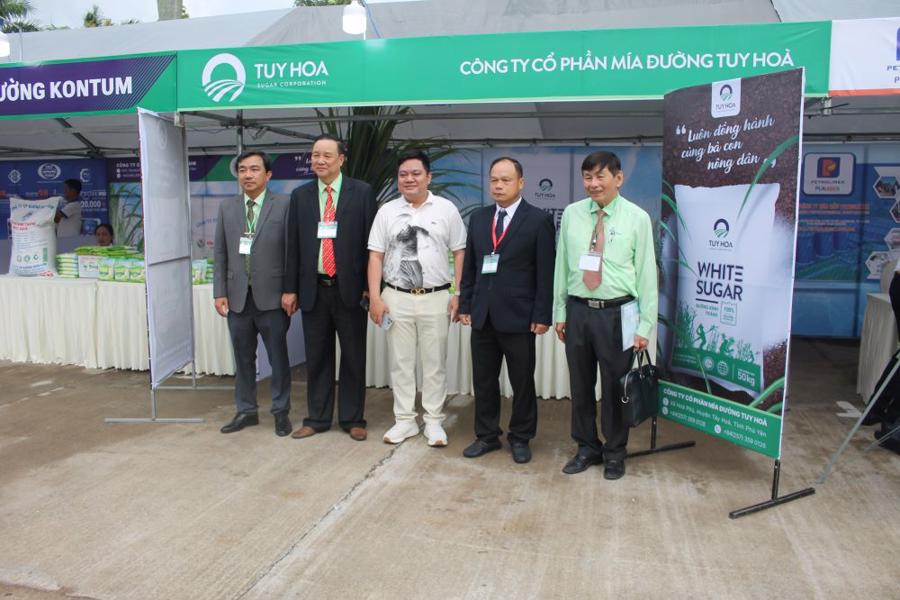
The factory’s sugarcane processing system has a capacity of 18,000 tons of sugarcane per day, equipped with modern machinery and advanced scientific and technological applications in its operations. This includes the use of carbonatation to remove impurities and ion exchange for decolorization.
In addition to sugar, the factory’s output also includes the An Khe biomass power plant, which uses bagasse as fuel with a capacity of 95 MW, fed into the national power grid. Currently, the Quang Ngai Sugar Joint Stock Company is implementing a project to expand the capacity of An Khe Sugar Factory to 25,000 tons of sugarcane per day and the An Khe biomass power plant to 135 MW, expected to be operational in the 2026/27 crop year.

At the workshop and conference, the Vietnam Sugarcane Association organized a donation drive for flood relief in the northern region, raising a total of 64,700,000 VND.


